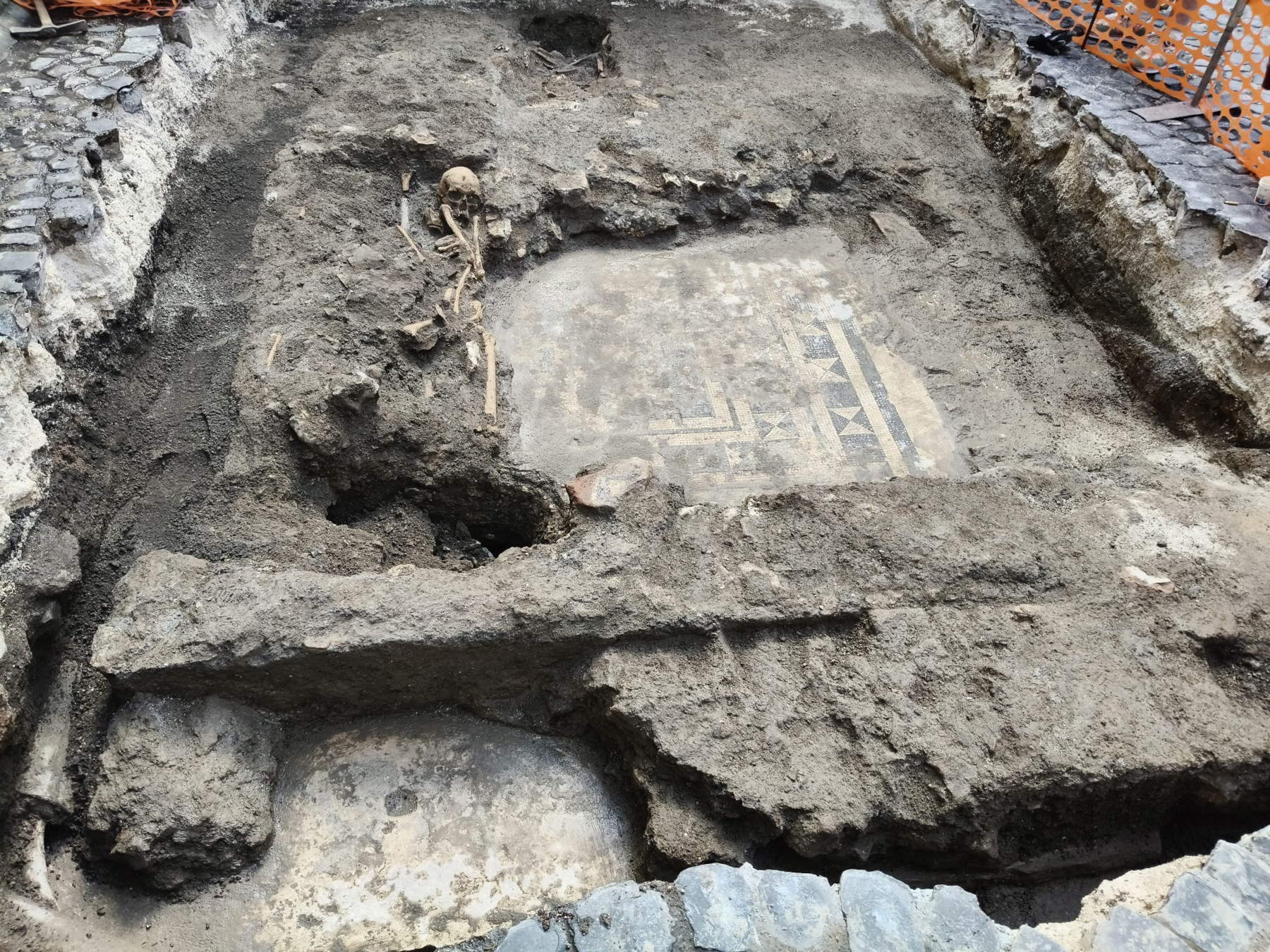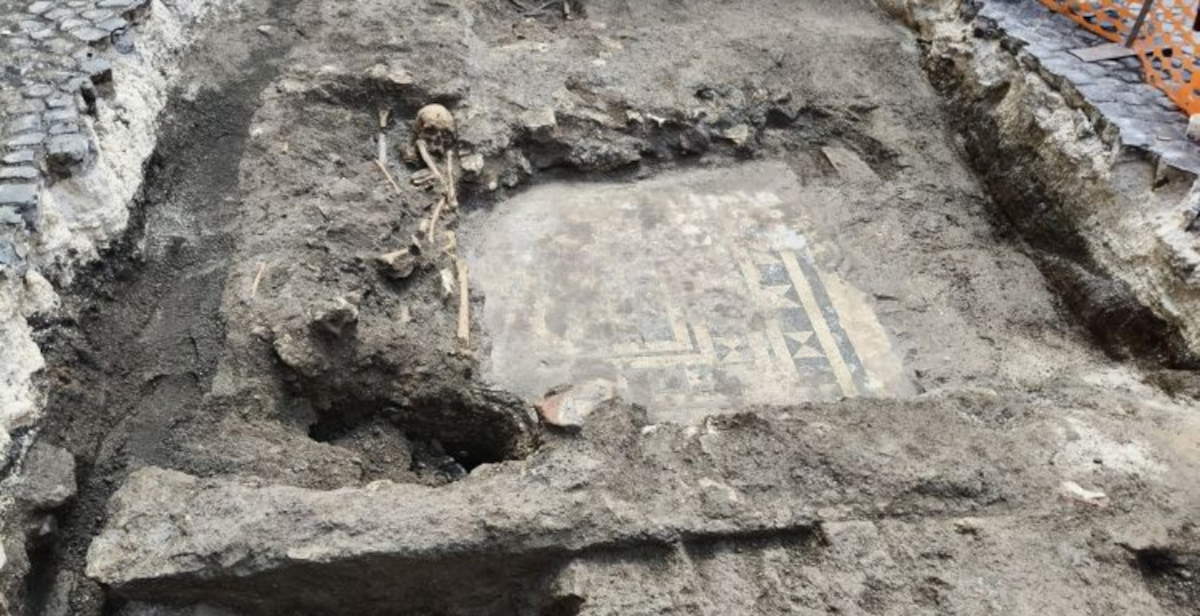In the historic center of Tivoli (Rome), near the church of Sant’Andrea, a significant archaeological discovery has emerged during excavation work for the laying of fiber optic cables and manholes. The work, carried out on behalf of FiberCop, manager of the digital infrastructure, unearthed a room with mosaic flooring, composed of black and white tiles arranged in a geometric pattern, which can be traced back to the early Roman imperial age.
The discovery prompted an immediate extension of the area of investigation, ordered by the ABAP Superintendency for the metropolitan area of Rome and the province of Rieti, and conducted by archaeologists from the company Gea S.C.a.r.L., which is in charge of the archaeological supervision during the work. Expanded research identified additional features, including a sector of ancient Tibur later reoccupied for funerary purposes, presumably in medieval times. In particular, at least two tombs bordered by low walls have been identified; their precise chronology will be defined through in-depth stratigraphic investigations and laboratory analysis.

The mosaic floor found represents evidence of a period when the city of Tibur, now Tivoli, was already an important urban center in the Latium area. The geometry of the tesserae and the technique of their realization thus confirm that they belong to a context of high artistic and architectural quality, consistent with other Roman monumental evidence in the historic center. The area affected by the works and excavations is part of an urban context already known for its wealth of archaeological evidence from different periods. Among the most relevant elements are the imposing substructures (underground structures) in opus reticulatum of the so-called Baths of Diana, visible on the basement floors of the surrounding buildings and included between Via dei Sosii, Vicolo Lolli, Via Sant’Andrea, Vicolo Torlonia and Vicolo del Labirinto. The structures document the articulation and complexity of the ancient urban settlement, characterized by public and private buildings of considerable size and significance.
The discovery of the mosaic and medieval burials confirms how Tivoli preserves a particularly dense and articulated historical stratification, where elements of Roman urban life coexist with evidence from later periods. The intervention therefore has both scientific and cognitive value, allowing the archaeological map of the historic center to be expanded and the dynamics of continuity and transformation over the centuries to be better understood.
 |
| Tivoli, a mosaic and two medieval burials discovered during fiber optic work |
Warning: the translation into English of the original Italian article was created using automatic tools. We undertake to review all articles, but we do not guarantee the total absence of inaccuracies in the translation due to the program. You can find the original by clicking on the ITA button. If you find any mistake,please contact us.